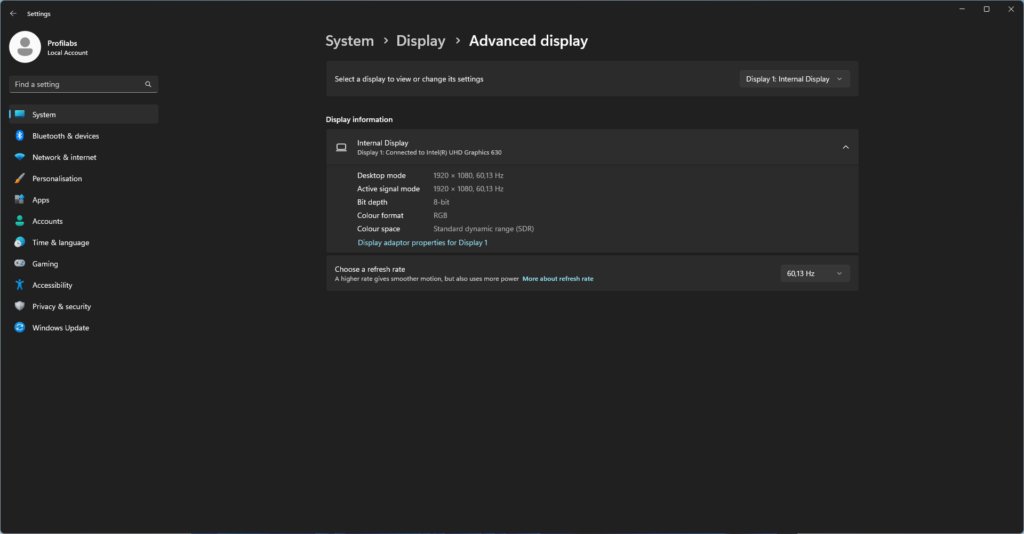TLDR:
Discover the importance of monitor refresh rate in competitive gaming. Learn what it is, why it matters, and how to choose the right monitor for your gaming needs.
The world of competitive gaming and eSports is a fast-paced environment where every millisecond counts.
One of the key components that can make a significant difference in your gaming experience is the monitor refresh rate.
This guide will delve into the concept of monitor refresh rate, its importance in gaming, and how to choose the right monitor for your gaming needs.
What is Refresh Rate?
Refresh rate is how often your computer updates the image on the screen. This means that if you have a higher number, your computer will update the image more times per second, which will make it look smoother.
How is Refresh Rate measured?
Refresh rate is measured in Hertz (Hz). Most screens today have a refresh rate of 60 Hz, but some gaming monitors can go up to 240 Hz or even higher.
Why is a high number important?
Monitor refresh rate is important for users because it impacts how smooth images appear on the screen.
A higher rate means that images are refreshed more frequently, and therefore appear smoother.
A lower rate can cause images to appear choppy or blurry, which can be distracting or even nauseating for some users.
What factors affect monitor refresh rate?
It is the number of times per second that the image on the screen is refreshed. This is important because it determines how smooth, or "fluid" motion appears on the screen.
A higher number means that motion appears smoother, while a lower rate can make it appear choppy.
The three main factors that affect refresh rate are resolution, frame rate, and pixel response time.
Resolution is the number of pixels that make up the image on the screen. A higher resolution means there are more pixels, and therefore more information to be refreshed. This results in a lower refresh because each pixel needs to be updated more often.
Frame rate is the number of times per second that a new image is displayed on the screen. A higher frame rate means that each image is displayed for less time, which results in a higher refresh.
Choosing the Right Monitor: Factors to Consider
When choosing a monitor, the refresh rate is an important factor to consider, especially for competitive gamers.
However, it's not the only factor. Here are some other components to keep in mind:
Resolution
This refers to the number of pixels displayed on the screen. A higher resolution provides a sharper image.
Graphics Card Compatibility
Your graphics card needs to be powerful enough to send data to the screen quickly, providing a smooth gameplay experience.
Screen Size:
Larger screens can provide a more immersive gaming experience, but they also require more powerful hardware to maintain high frame rates.
Panel Type:
Different panel types offer different advantages. For example, IPS panels offer better color accuracy and viewing angles, while TN panels have faster response times.
Price
High refresh monitors can be more expensive. It's important to balance your budget with your gaming needs.

How to Check and Change Your Monitor's Refresh Rate
Checking or changing your monitor’s refresh settings is simple through the Windows Settings menu. Here are the steps:
- Right-click on your desktop and select "Display settings".
- Scroll down and click on "Advanced display settings".
- Under "Choose a display", select the monitor you want to check.
- Under "Refresh rate", you'll see the current setting. If you want to change it, select a different option from the dropdown menu.
Remember, to take full advantage of a high refresh numbers, you'll need a game that can run at high frame rates, and a graphics card powerful enough to handle it.
Conclusion
In the world of competitive gaming, having a monitor with a high refresh rate can be a game-changer.
While it's not the only factor to consider when choosing a monitor, it's certainly an important one.
Whether you're an aspiring eSports professional or a passionate gaming enthusiast, understanding monitor refresh rates can help you make an informed decision and enhance your gaming experience.
